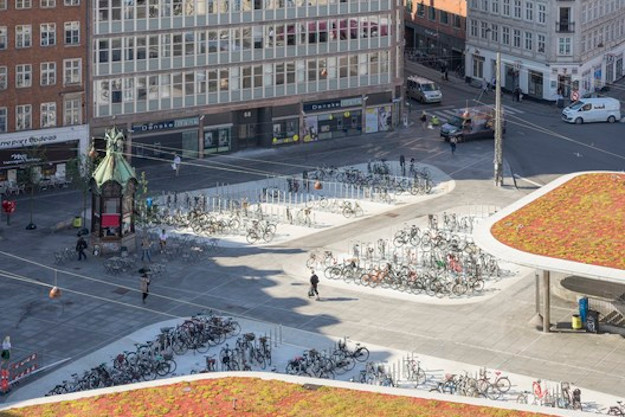As it comes to bike infrastructures, sometimes they are completely new and some other are built based on previous infrastructures such us car garages. The Fahrrad Station Süd in the Karlsruhe station, Germany, is a clear example of the last point.
At the beginning, it was an obscure parking for 38 cars which was transformed into a building for 680 bicycles. Thus, less cars and more bikes, a direct example of how urban mobility is changing. Originally, the prestigious architect Rem Kolhaas was proposed to build a facility for the Zentrums für Kunst und Medientechnologie (Center for Art and Technology Media) next to the train station. After some disagreements, Rem rejected the project and finally the building was constructed in a different neighbor. So, the building continued being a parking for cars. In 2017, Karlsruhe proposed the target of reaching a 30 percent of total modal split by bikes and a new project started which concluded in nine months. As a result, the old car parking was transformed into an impressive 1,300 squared meters for bikes. It accepts not only urban and conventional bicycles, but also cargobikes, bike tows and electric bikes. Moreover, the station offers a modern locker room, drinking fountains and even a workshop with professional tools. In addition, it has five zones identified with different colors and symbols on floors and walls. Such was the impact when opened that the building received the German Cycling Award in 2020.
Furthermore, it opens 24-7 and the electricity that consumes comes completely from renewable energy sources. From the user economy, using it to lock your bike costs 1 euro per day and there are tickets for a month (8.50 euros), a semester (35 euros) and a year (75 euros).


